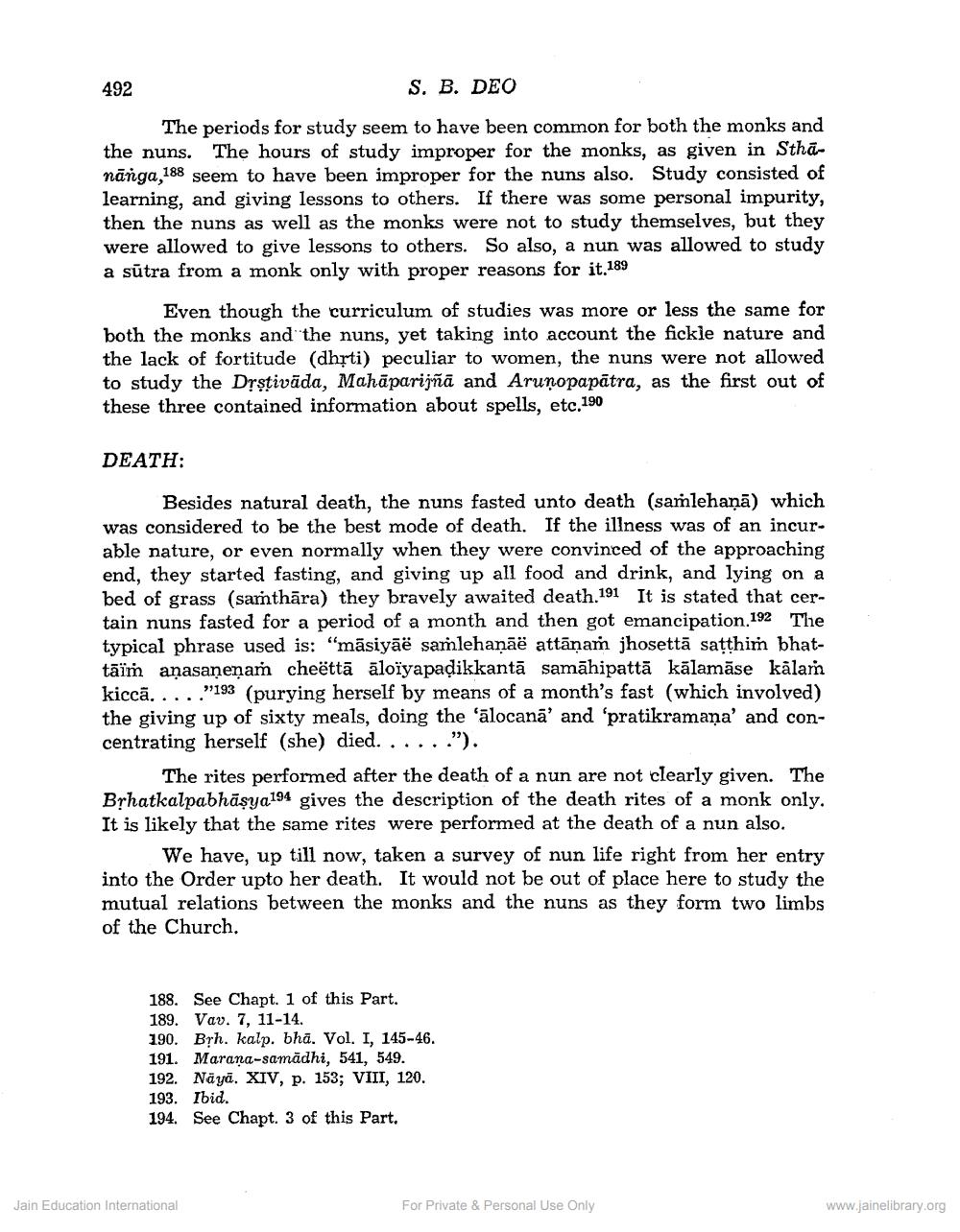________________
492
S. B. DEO The periods for study seem to have been common for both the monks and the nuns. The hours of study improper for the monks, as given in Sthānānga,188 seem to have been improper for the nuns also. Study consisted of learning, and giving lessons to others. If there was some personal impurity, then the nuns as well as the monks were not to study themselves, but they were allowed to give lessons to others. So also, a nun was allowed to study a sūtra from a monk only with proper reasons for it.189
Even though the curriculum of studies was more or less the same for both the monks and the nuns, yet taking into account the fickle nature and the lack of fortitude (dhști) peculiar to women, the nuns were not allowed to study the Destivāda, Mahāparijñā and Aruņopapātra, as the first out of these three contained information about spells, etc.190
DEATH:
Besides natural death, the nuns fasted unto death (samlehaņā) which was considered to be the best mode of death. If the illness was of an incurable nature, or even normally when they were convinced of the approaching end, they started fasting, and giving up all food and drink, and lying on a bed of grass (sarnthāra) they bravely awaited death.191 It is stated that certain nuns fasted for a period of a month and then got emancipation.192 The typical phrase used is: "māsiyāë samlehanāë attānam jhosettā satthiṁ bhattāïm anasaņeņaṁ cheëttā āloïyapadikkantā samāhipattā kālamāse kālam kiccā. . . . ."193 (purying herself by means of a month's fast (which involved) the giving up of sixty meals, doing the 'ālocanā' and 'pratikramana' and concentrating herself (she) died. .....").
The rites performed after the death of a nun are not clearly given. The Brhatkalpabhāşya194 gives the description of the death rites of a monk only. It is likely that the same rites were performed at the death of a nun also.
We have, up till now, taken a survey of nun life right from her entry into the Order upto her death. It would not be out of place here to study the mutual relations between the monks and the nuns as they form two limbs of the Church.
188. See Chapt. 1 of this part. 189. Vav. 7, 11-14. 190. Byh. kalp. bha. Vol. I, 145-46. 191. Marana-samadhi, 541, 549. 192. Näyā. XIV, p. 153; VIII, 120. 193. Ibid. 194. See Chapt. 3 of this Part.
Jain Education International
For Private & Personal Use Only
www.jainelibrary.org




